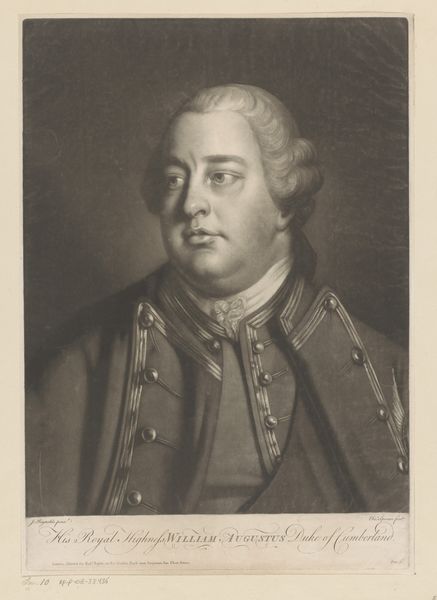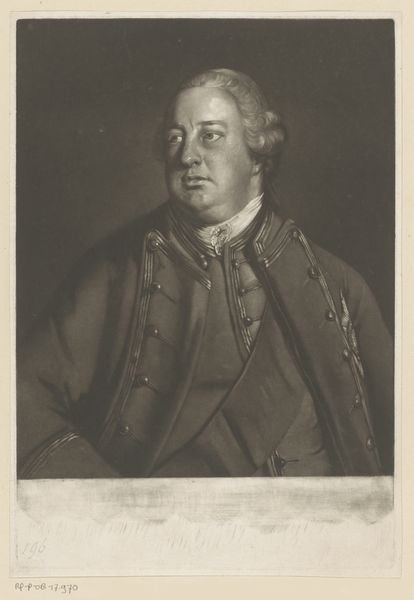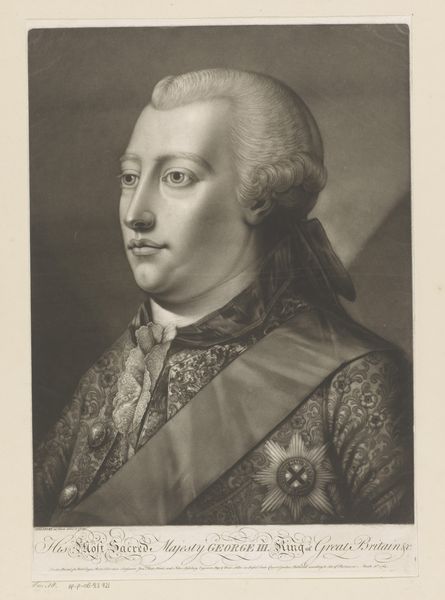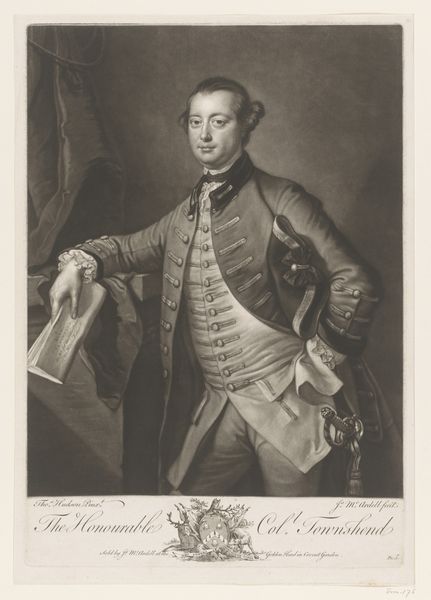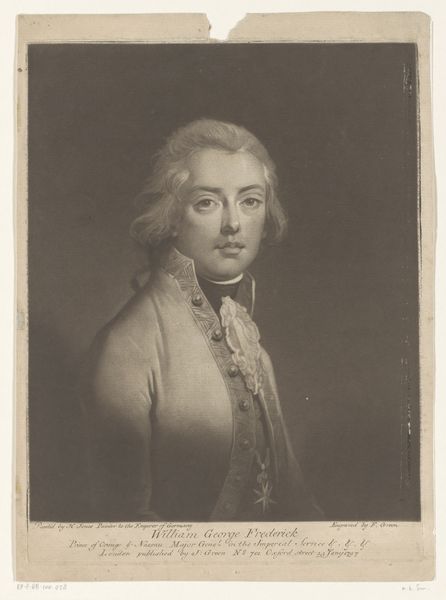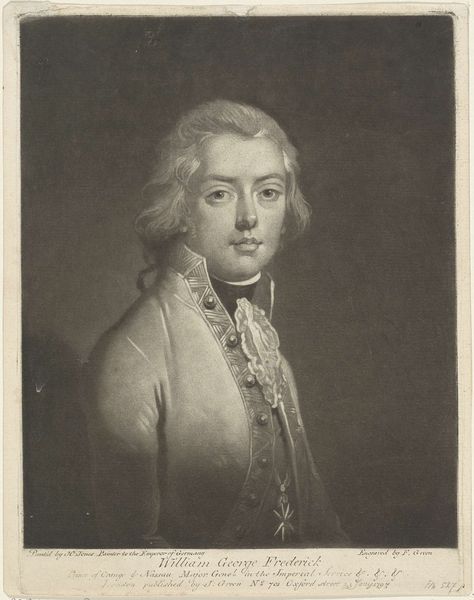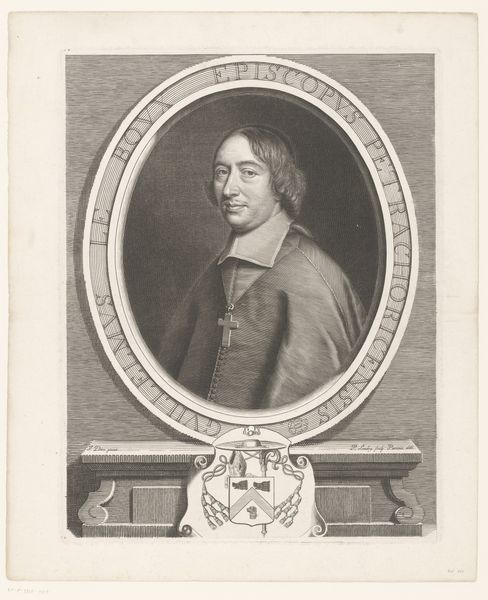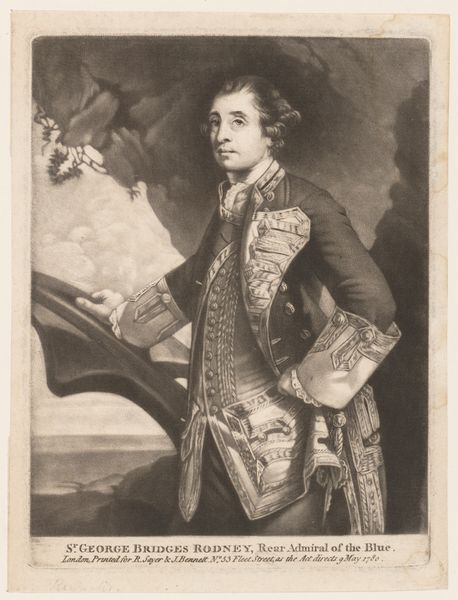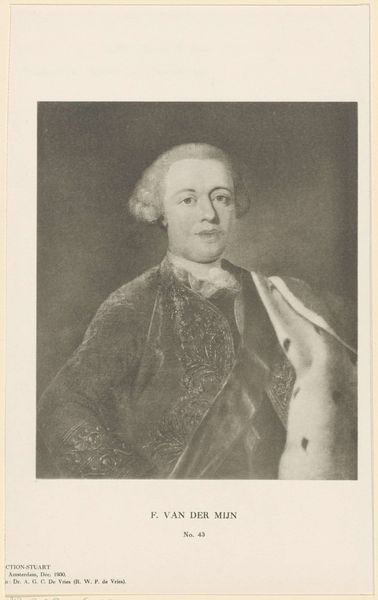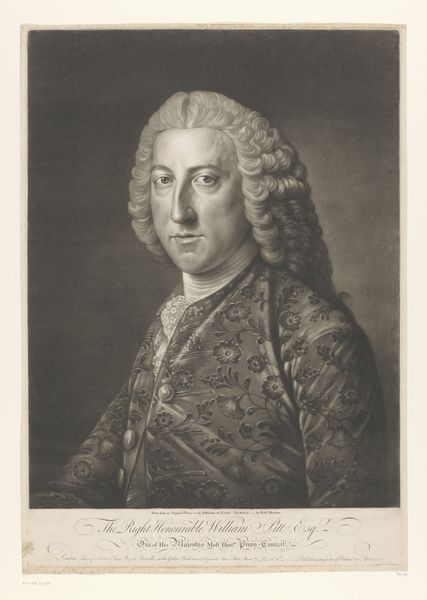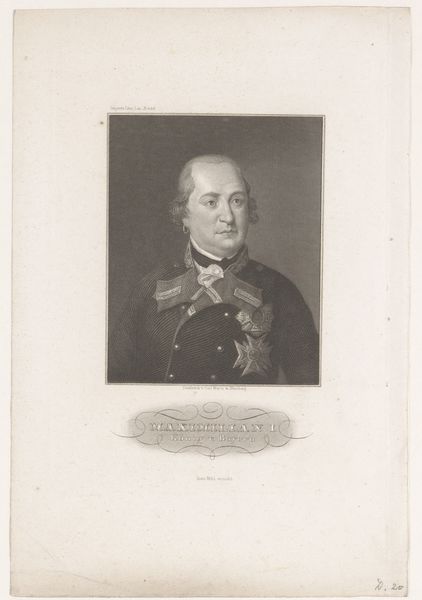
Dimensions: height 391 mm, width 279 mm
Copyright: Rijks Museum: Open Domain
Curator: Here we have James McArdell’s "Portret van Henry Townshend," created sometime between 1762 and 1765. It’s currently held in the collection of the Rijksmuseum. Editor: It's striking how the use of light shapes the subject’s face, giving it an almost sculptural quality, though it's an engraving. There's an ethereal, slightly detached air about it, wouldn’t you say? Curator: The engraving served an important function. McArdell, working during a time of rising British imperial power, was actively circulating images of the aristocracy and military figures to bolster national identity and sentiment. Townshend, depicted here, died in battle, a fact noted directly on the print itself. The piece serves as a memorial but also a record. Editor: Absolutely, note how his gaze avoids direct engagement, which enhances that sense of nobility, even romantic heroism, tinged with melancholy. And behind him, that austere bust creates such depth to the overall form, which contributes so much to the image. Curator: The placement of the bust indeed invites a compelling commentary on memory and legacy, which reflects the baroque ideals of portraiture but moves beyond it. The piece itself stands as a marker of its time. The meticulous details in his uniform, precisely captured by McArdell, underscore the significance of rank and duty within the 18th-century military structure. Editor: See how McArdell employs chiaroscuro to amplify the texture of the fabric and contours of the figure. Every tiny button is given definition by light! Curator: Well, the goal wasn't exactly about stark naturalism, as perhaps later photography would try to render. These types of images had to elevate its subject to something between civic hero and ideal. The soft lines help in that regard, it wasn't supposed to show reality. Editor: True, it’s less a literal depiction and more an elevation to iconic status through purely formal devices. The composition certainly reflects baroque sensibility while almost hinting at an emerging neoclassicism with its idealised presentation. Overall, there's more there than meets the eye, if one spends the time to deconstruct. Curator: Yes, it truly bridges aesthetics with sociopolitical meaning. Editor: Absolutely, it is all about forms interacting.
Comments
No comments
Be the first to comment and join the conversation on the ultimate creative platform.
